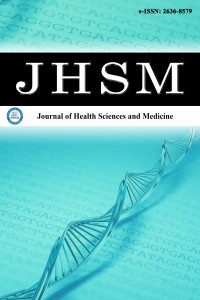1.
Muppalla SK, Vuppalapati S, Reddy Pulliahgaru A, Sreenivasulu H. Effects of excessive screen time on child development: an updated review and strategies for management. Cureus. 2023;15(6):e40608. doi: 10.7759/cureus.40608
2.
Liu J, Riesch S, Tien J, Lipman T, Pinto-Martin J, O’Sullivan A. Screen media overuse and associated physical, cognitive, and emotional/behavioral outcomes in children and adolescents: an integrative review. J Pediatr Health Care. 2022;36(2):99-109. doi:10.1016/j.pedhc.2021.06.003
3.
Riesch SK, Liu J, Kaufmann PG, Doswell WM, Cohen S, Vessey J. Preventing adverse health outcomes among children and adolescents by addressing screen media practices concomitant to sleep disturbance. Nurs Outlook. 2019;67(4):492-496. doi:10.1016/j.outlook.2019.06.009
4.
Trinh MH, Sundaram R, Robinson SL, et al. Association of trajectory and covariates of children’s screen media time. JAMA Pediatr. 2020; 174(1):71-78. doi:10.1001/jamapediatrics.2019.4488
5.
Mustonen R, Torppa R, Stolt S. Screen time of preschool-aged children and their mothers, and children’s language development. Children. 2022;9(10):1577. doi:10.3390/children9101577
6.
Reid Chassiakos YL, Radesky J, Christakis D, et al. Children and adolescents and digital media. Pediatrics. 2016;138(5)doi:10.1016/j.infbeh. 2020.101424
7.
Lin HP, Chen KL, Chou W, et al. Prolonged touch screen device usage is associated with emotional and behavioral problems, but not language delay, in toddlers. Infant Behav Develop. 2020;58:101424. doi:10.1016/j.infbeh.2020.101424
8.
Chen W, Adler JL. Assessment of screen exposure in young children, 1997 to 2014. JAMA Pediatr. 2019;173(4):391-393. doi:10.1001/jamapediatrics. 2018.5546
9.
Zhao J, Yu Z, Sun X, et al. Association between screen time trajectory and early childhood development in children in China. JAMA Pediatr. 2022;176(8):768-775. doi:10.1001/jamapediatrics.2022.1630
10.
McArthur BA, Tough S, Madigan S. Screen time and developmental and behavioral outcomes for preschool children. Pediatr Res. 2022;91(6): 1616-1621. doi:10.1038/s41390-021-01572-w
11.
Kushima M, Kojima R, Shinohara R, et al. Association between screen time exposure in children at 1 year of age and autism spectrum disorder at 3 years of age: the Japan environment and children’s study. JAMA Pediatr. 2022;176(4):384-391. doi:10.1001/jamapediatrics.2022.1630.
12.
Glover J, Ariefdjohan M, Fritsch SL. Kids anxiety and the digital world. Child Adolesc Psychiatr Clin. 2022;31(1):71-90. doi:10.1016/j.chc.2021.06. 004
13.
Adıbelli D, Sümen A. The effect of the coronavirus (COVID-19) pandemic on health-related quality of life in children. Child Youth Serv Rev. 2020;119:105595. doi:10.1016/j.childyouth.2020.105595
14.
Kabali HK, Irigoyen MM, Nunez-Davis R, et al. Exposure and use of mobile media devices by young children. Pediatrics. 2015;136(6):1044-1050. doi:10.1542/peds.2015-2151
15.
Dinleyici M, Carman KB, Ozturk E, Sahin Dagli F. Media use by children, and parents’ views on children’s media usage. Interact J Med Res. 2016;5(2):e18. doi:10.2196/ijmr.5668
16.
İnan Kaya G, Mutlu Bayraktar D, Yılmaz Ö. Digital parenting attitude scale: validity and reliability study. Mehmet Akif Ersoy Uni J Edu Fac. 2020;46:149-173. doi:10.21764/maeuefd.390626
17.
Türel YK, Gür D. Ebeveynlerin çocukların bilişim teknolojileri kullanımına yönelik tutumları üzerine bir ölçek geliştirme çalışması. Uludağ Üni Eğit Fak Derg. 2019;32(1):145-165. doi:10.19171/uefad.455888
18.
Bulduk M, Güdücü Tüfekci F. The effect of parental education on children’s digital device usage and sleep patterns: a randomised controlled trial. Counsell Psychother Res. 2025;25(1):e12886. doi:10.1002/capr.12886
19.
DeVellis RF. Ölçek Geliştirme-Kuram ve Uygulamalar. 3 ed. Nobel Akademik Yayıncılık; 2022.
20.
Erkuş A. Psikolojide Ölçme ve Ölçek Geliştirme. 6 ed. Pegem Akademi Yayınları; 2022.
21.
Field A. Discovering statistics using IBM SPSS statistics. Sage publications limited; 2024.
22.
Sadeghi S, Pouretemad HR, Khosrowabadi R, Fathabadi J, Nikbakht S. Effects of parent-child interaction training on children who are excessively exposed to digital devices: a pilot study. Int J Psych Med. 2019;54(6):408-423. doi:10.1177/0091217419837070
23.
Evci N, Aylar F. Use of confirmatory factor analysis in scale development studies. J Soc Sci. 2017;4(10):389-412. doi:10.16990/SOBIDER.3386
24.
Lawshe C. A Quantitative Approach to Content Validity. Personnel psychology. Berrett-Koehler Publishers; 1975.
25.
Yurdugül H. Using content validity indexes for content validity in scale development studies. presented at: XIV Ulusal Eğitim Bilimleri Kongresi; 2005.
26.
Özdamar K. Eğitim, sağlık ve davranış bilimlerinde ölçek ve test geliştirme yapısal eşitlik modellemesi. 1 ed. Nisan Kitabevi; 2016.
27.
Seçer İ. SPSS ve LISREL ile pratik veri analizi: analiz ve raporlaştırma. 4 ed. Anı Yayıncılık; 2023.
28.
Şeker H, Gençdoğan B. Psikolojide ve Eğitimde Ölçme Aracı Geliştirme. 3 ed. Nobel Akademik Yayıncılık; 2020.
29.
Tavşancıl E. Tutumların ölçülmesi ve SPSS ile veri analizi. 6 ed. Nobel Akademik Yayıncılık; 2019.
30.
Büyüköztürk Ş. Sosyal bilimler için veri analizi el kitabı. Pegem Atıf İndeksi. 2018:001-214.
31.
Pallant J. SPSS survival manual: a step by step guide to data analysis using IBM SPSS. Routledge; 2020.
32.
Fein EC, Gilmour J, Machin T, Hendry L. Statistics for research students. University of Southern Queensland Darling Heights, Australia; 2022.
33.
Alford S, Teater B. Quantitative research. Handbook of research methods in social work. Edward Elgar Publishing; 2025:156-171.
34.
Tabachnick BG, Fidell LS. Çok değişkenli istatistiklerin kullanımı. 6 ed. Nobel Akademik Yayıncılık; 2020.
35.
Comrey AL, Lee HB. A first course in factor analysis. Psychology press; 2013.
36.
Alphar R. Uygulamalı Çok Değişkenli İstatistiksel Yöntemler, Ankara. 6 ed. Detay Yayıncılık. 2020.
37.
Karasar N. Bilimsel araştırma yöntemi. Nobel Akademik Yayıncılık; 2016.
38.
Tezbaşaran AA. Likert tipi ölçek geliştirme kılavuzu. Türk Psikologlar Derneği; 1996.
39.
Can A. SPSS ile bilimsel araştırma sürecinde nicel veri analizi. vol 12. Akademi Yayıncılık; 2018.
40.
Huck SW. Reading statistics and research. Boston, USA. 2012;4:103-112.
41.
Thompson B. Foundations of behavioral statistics: an insight-based approach. Guilford Press; 2006.
42.
Güriş S, Astar M. Bilimsel araştırmalarda SPSS ile istatistik. Der Yayınları; 2014.
43.
İlhan M, Çetin B. LISREL ve AMOS programları kullanılarak gerçekleştirilen yapısal eşitlik modeli (yem) analizlerine ilişkin sonuçların karşılaştırılması. J Measur Evaluat Edu Psychol. 2014;5(2):26-42. doi:10.21031/epod.31126
44.
Tomak L. Madde analizi ve tıp fakültesi sınavlarının değerlendirilmesi. Ondokuz Mayıs Üniversitesi; 2013.
45.
Presta V, Guarnieri A, Laurenti F, et al. The impact of digital devices on children’s health: a systematic literature review. J Funct Morphol Kinesiol. 2024;9(4):236. doi:10.3390/jfmk9040236
46.
Kildare CA, Middlemiss W. Impact of parents mobile device use on parent-child interaction: a literature review. Comput Human Behav. 2017;75:579-593. doi:10.1016/j.chb.2017.06.003
47.
Fidan NK, Olur B. Examining the relationship between parents’ digital parenting self-efficacy and digital parenting attitudes. Edu Informat Technol. 2023;28(11):15189-15204. doi:10.1007/s10639-023-11841-2

